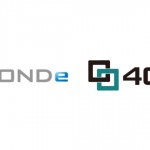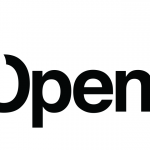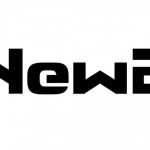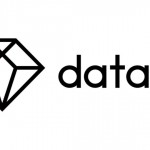Tealiumが目指す、タグマネジメント市場とは(英文)
Back in 2002, Lunsford joined web analytics pioneer WebSideStory, which was one of the first, tag-based, web analytics providers that moved beyond log file analysis. Today, with some of his WebSideStory team in place, Lunsford hopes that he can create a similar future for Tealium: WebSideStory was publicly-traded until it was rolled up under analytics giant Omniture in 2007.
Lunsford most recently hails from Limelight Networks where he was CEO and guided the content distribution network (CDN) toward rich media content delivery. After taking over the CEO reins at Tealium in early January, Lunsford sees the tag management providers and CDNs closely aligned around the need to deliver tags from the “edge” of the Internet.
AdExchanger spoke to Lunsford, who is also Chairman of Limelight Networks, about Tealium, his background and industry trends.
AdExchanger: Drawing on your Limelight experience, can you discuss why the CDNs are important to advertising?
JEFF LUNSFORD: CDNs are “baked” into the Internet content delivery infrastructure. They’re a necessary part for anyone who wants to run a high performance web site – whether you’re a content or commerce provider. Customer engagement is incredibly important. It’s probably the single most sensitive variable as far as the efficacy of your web site: how fast it loads. There are now five or six companies that can cache content at the edge of the Internet at scale. And, I believe there are three companies that can do it at global scale – Akamai, Limelight and Level 3. Telium has a multi-CDN architecture. We’re agnostic as to which CDNs are out there. We do performance tests and use whichever one can deliver our tags the fastest.
The web analytics guys were the first to put a pixel on your web page and then the ad network did it, and then the e-mail guys did it. Now every website has 20 or 30 tags.
Ten years ago when we took Web Side Story public, [tags were] just emerging and now it’s a pain point. When you solve that pain point with a universal tag you also solve a lot of the data correlation issues that exist on a web site. If you’re working with 20 different systems to track the efficacy of your marketing campaigns or the efficiency of your web site, then you end up with 20 data sources – and from each you’re trying to understand the value. When you’re looking at a tag management platform and you’re the traffic cop for the tags, you’re in a position where you can help your customers solve tag management and solve what I call “clean data.”
What do you mean by clean data?
I mean correlated, actionable data from multiple digital marketing vendors that a customer will be able to access and use from our cloud-based platform.
How, specifically, is Tealium differentiating in the tag management space today?
We’re passionately focused on our customers’ success. We’re up to over 85 people now. It’s not just about the technology platform. It’s about providing the service to your customers because most customers are struggling with running their marketing operations department. They can’t find the talent. If they do find them, they can’t afford them.
Tags are not the only pain point, it’s the entire marketing operations scene, and running it in a multichannel world where you’ve got to worry about mobile, social, web and e-mail and try to pull it all together. It’s a big challenge.
We are launching “Tag Management University” shortly and training out customers on best practices. We did the same thing in web analytics and will do it on a larger scale here.
What’s the target market for Tealium? Some tag management vendors say sell-side (publishers), others buy-side, and still more say both.
We’re focused on the buy side — the marketers and the agencies, the guys that are running the web sites. However, plenty of our customers are publishers.
Why don’t you consider Tealium a data management platform?
There are definitely data management capabilities that we are building into our platform. We started as tag management and we’re going to build out from there. Like every technology sector, you start off as a point solution company, then you build your suite out wider and wider with adjacent services. It’s no secret that when you’re handling the tags, you’re in the data flow, and getting “clean data” is a big win if you can solve that problem.
Google has popped into the tag management space. Is that a concern?
We certainly acknowledge them and respect them – and we work well with them. We think there’s a place in the ecosystem for their service.
We think we provide what I would call a super set to their service, technically and from a service level.
We all built great companies in the web analytics era when Google had their Google Analytics out there for free, so we’re all comfortable and understand that Google’s here to stay. Google’s a dominant force and we work well with them. We know there will be some companies that will use theirs for free and there are others that need the service and other features that we provide.
What is the most popular use case for the Telium platform among your clients today?
The baseline solving of the tag management issue is the most popular use case. We have about 150 customers. Across those customers we have about 350 different tags that we’re managing. By that I mean tags from 350 different vendors. It’s multiple tags per vendor across any customer such that there are tens of thousands of tags.
So, if you’re a digital marketer and want to add e-mail marketing capabilities, where do you start? You can go to the LUMAscape graphs and try to pick from one of the sixty providers – or you can work with Telium and deploy our universal tag to hook into partners.
What’s Telium’s approach to providing attribution capabilities? Or do you partner with vendors?
We partner. We’re not an attribution platform. We think there are vendors that do that well.
Any plans to target Europe or Asia in the near future?
We have five employees in Europe and we’re ramping. We’ll double or triple it this year. My history is running much larger companies and so I’m here to ramp this thing very quickly. In my other companies we had big European and APAC operations, so we’re going to get Europe to critical mass first and then, probably in the second half of this year, turn our eyes to Asia.
Given the number of players in the tag management space, what do you expect to happen in the next two or three years? Is there enough room for all the players that are in the space?
Right now there is. I know a lot of the guys as investors and everybody’s doing really well, so it’s a “greenfield” market for the next couple of years. In three, four years you’ll start to see some consolidation or companies will sell to the bigger guys. I think for the next two years, there’s plenty of room to run.
I’m sure you work with the agencies, the marketers, but do you work with ad networks, too?
They’re not so much clients as vendor partners – so we’ll handle the ad tags from a Collective or Specific Media or whomever.
Twelve to 18 months from now, what are some milestones you would like Telium to achieve?
Building our customer base is one. We should end this year with 350+ customers (from 150) and a much broader product suite. We’re doing a lot more on the data side this year. We’ve already launched mobile products, so we think we’re going to see a lot of traction in mobile.
Customer acquisition, talent acquisition, and product suite expansion are all important milestones. We’re opening a new office in April where we’re going to have room for 200 employees. We don’t need any more financing. We’ve got everything we need to ramp this thing super-fast. We’re focused on our customers, taking care of them and continuing to build great product.










